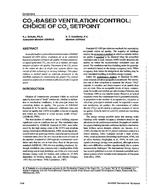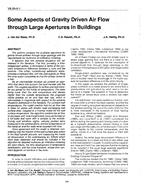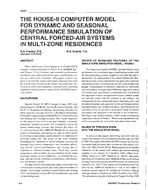This paper is based on findings resulting from ASHRAE Research Project RP-1613.
The first part of this paper (Revising ASHRAE Climatic Data for Design and Standards – Part 1: Overview and Data [1613-RP]) provided a summary of the changes made to the tables of climatic design conditions in the 2013 ASHRAE Handbook – Fundamentals. This second part describes changes that are made to the clear-sky solar radiation model. The model provides a simple way to calculate solar irradiance components from a pair of location-specific parameters for any location in the world, and is used in particular to evaluate cooling loads in buildings. The model was first introduced in the 2009 Handbook but frequently exhibited an apparent bias (direct normal irradiance too low, diffuse irradiance too high), which presumably resulted from a high bias in the aerosol data sets used for its derivation. This paper explains how the bias was corrected for the 2013 Handbook. Various sources of gridded aerosol data, derived from satellite observations, were combined and calibrated with sun photometric data from 652 ground stations. A statistical analysis was performed to determine the most appropriate statistical estimator of aerosol optical depth to use. It was found that because of the log-normal distribution of aerosol optical depth over monthly periods, using its median (rather than its mean) translates into irradiance values that are more representative of average conditions. A simple linear correlation was established to correlate the median aerosol optical depth to its mean.Finally, the derivation of a condensed set of equations, which constitutes the clear-sky model as it appears in the Handbook, was revised to cover a larger set of aerosol and surface albedo conditions. The clear-sky model has been validated against clear-sky solar irradiance data from a number of research-class stations, including Darwin,Australia; Golden, Colorado; and Xianghe, China. Based on the analysis summarized here, the clear-sky model is found to be in reasonable agreement with measured values for these stations, even under very hazy conditions.
Product Details
- Published:
- 2013
- Number of Pages:
- 16
- File Size:
- 1 file , 5 MB
- Product Code(s):
- D-DE-13-017
- Note:
- This product is unavailable in Russia, Belarus


